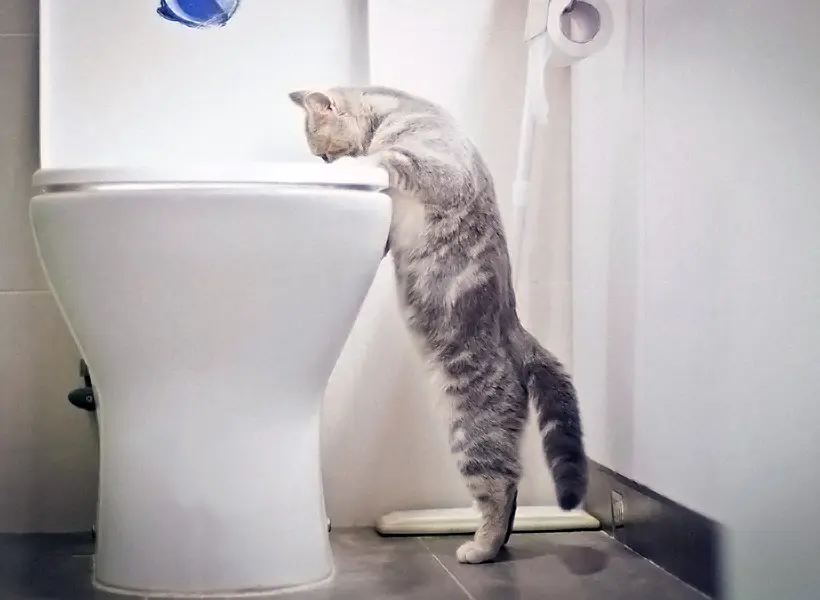We've stumbled on this great article relating to Can You Flush Cat Poo or Litter Down the Toilet? below on the web and thought it made perfect sense to relate it with you over here.

Introduction
As pet cat owners, it's necessary to be mindful of just how we take care of our feline buddies' waste. While it may seem hassle-free to flush cat poop down the toilet, this method can have detrimental effects for both the environment and human health.
Environmental Impact
Flushing pet cat poop presents dangerous virus and bloodsuckers into the water system, presenting a considerable danger to aquatic communities. These contaminants can negatively impact aquatic life and concession water top quality.
Wellness Risks
Along with ecological worries, flushing cat waste can also pose wellness threats to people. Feline feces may include Toxoplasma gondii, a parasite that can trigger toxoplasmosis-- a potentially extreme illness, specifically for expectant women and people with weakened immune systems.
Alternatives to Flushing
The good news is, there are more secure and a lot more accountable ways to deal with cat poop. Take into consideration the adhering to options:
1. Scoop and Dispose in Trash
The most common method of taking care of cat poop is to scoop it right into a naturally degradable bag and throw it in the garbage. Make sure to use a committed trash scoop and take care of the waste immediately.
2. Use Biodegradable Litter
Select naturally degradable feline litter made from materials such as corn or wheat. These trashes are environmentally friendly and can be securely thrown away in the garbage.
3. Bury in the Yard
If you have a backyard, think about hiding feline waste in a marked area far from veggie gardens and water resources. Be sure to dig deep adequate to prevent contamination of groundwater.
4. Set Up a Pet Waste Disposal System
Purchase a pet garbage disposal system particularly created for cat waste. These systems use enzymes to break down the waste, minimizing odor and environmental impact.
Verdict
Responsible family pet ownership prolongs past providing food and sanctuary-- it likewise includes proper waste management. By avoiding flushing feline poop down the commode and going with alternative disposal approaches, we can decrease our environmental impact and protect human health and wellness.
Why Can’t I Flush Cat Poop?
It Spreads a Parasite
Cats are frequently infected with a parasite called toxoplasma gondii. The parasite causes an infection called toxoplasmosis. It is usually harmless to cats. The parasite only uses cat poop as a host for its eggs. Otherwise, the cat’s immune system usually keeps the infection at low enough levels to maintain its own health. But it does not stop the develop of eggs. These eggs are tiny and surprisingly tough. They may survive for a year before they begin to grow. But that’s the problem.
Our wastewater system is not designed to deal with toxoplasmosis eggs. Instead, most eggs will flush from your toilet into sewers and wastewater management plants. After the sewage is treated for many other harmful things in it, it is typically released into local rivers, lakes, or oceans. Here, the toxoplasmosis eggs can find new hosts, including starfish, crabs, otters, and many other wildlife. For many, this is a significant risk to their health. Toxoplasmosis can also end up infecting water sources that are important for agriculture, which means our deer, pigs, and sheep can get infected too.
Is There Risk to Humans?
There can be a risk to human life from flushing cat poop down the toilet. If you do so, the parasites from your cat’s poop can end up in shellfish, game animals, or livestock. If this meat is then served raw or undercooked, the people who eat it can get sick.
In fact, according to the CDC, 40 million people in the United States are infected with toxoplasma gondii. They get it from exposure to infected seafood, or from some kind of cat poop contamination, like drinking from a stream that is contaminated or touching anything that has come into contact with cat poop. That includes just cleaning a cat litter box.
Most people who get infected with these parasites will not develop any symptoms. However, for pregnant women or for those with compromised immune systems, the parasite can cause severe health problems.
How to Handle Cat Poop
The best way to handle cat poop is actually to clean the box more often. The eggs that the parasite sheds will not become active until one to five days after the cat poops. That means that if you clean daily, you’re much less likely to come into direct contact with infectious eggs.
That said, always dispose of cat poop in the garbage and not down the toilet. Wash your hands before and after you clean the litter box, and bring the bag of poop right outside to your garbage bins.
https://trenchlesssolutionsusa.com/why-cant-i-flush-cat-poop/

Hopefully you liked our section on Don’t flush cat feces down the toilet. Thanks for spending some time to read our piece. Sharing is nice. Who knows, you may be helping someone out. Thank you for your time. Kindly stop by our site back soon.
Details Here